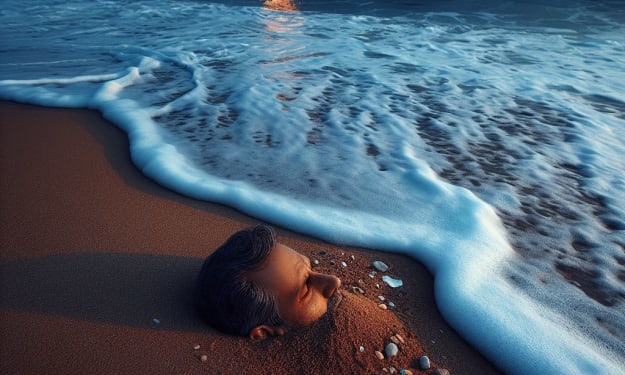The Remarkable Tale of Humans and Fish Switching Places
A wonder of the world

In a world gripped by unusual seismic activity, volcanoes awaken from their slumber. However, instead of spewing molten lava and ash, they release an invisible gas that proves harmless to mammals and insects but threatens the existence of humans. Gas masks and medications prove futile, and Earth seems to declare, "Enough is enough; humans, it's time to seek refuge elsewhere."
Thus, humanity embarks on a global migration to the depths of the seas and oceans, where the gas cannot reach. The first order of business is the construction of underwater cities. Engineers employ anti-corrosive metals and moisture-resistant materials to overcome the challenges posed by the aquatic environment. Yet, with an overwhelming population, people are compelled to move further away from the shore, delving deeper into the ocean's abyss. As they venture, the pressure intensifies, demanding the development of specialized equipment capable of withstanding the immense water column. The process is both time-consuming and expensive, leading to a divergence of paths. While some focus on building cities and gradually moving deeper, others find solace in coastal areas, favoring ponds and lakes as their new abodes.
Living in freshwater bodies presents several advantages. Movement becomes effortless, requiring minimal energy and time. Moreover, freshwater necessitates less intricate filtration systems compared to salty oceans. The smaller population in ponds and lakes ensures cleaner water, attracting affluent individuals, while the less fortunate survive in the expansive oceans.
Renowned automobile brands seize the opportunity and design stylish submarines and closed boats equipped with advanced filtration systems. Collaborations between scientists and engineers yield a technology capable of rapidly extracting oxygen from water. Every house now incorporates a box that continually fills it with fresh air while another box removes carbon dioxide, releasing it back into the water. Clothing brands revolutionize fashion, crafting sleek diving suits embedded with heating systems to combat the chilling ocean temperatures. Sneakers become a thing of the past as fashionable fins take their place, featuring a myriad of designs and engravings. Underwater mills generate electricity, while high-speed trains travel through vacuum pipes submerged beneath the ocean's surface. Notably, aquatic farms emerge, nurturing livestock that feeds on grass and seeds. Additionally, incubators foster plants that produce extra oxygen. This transformative journey also impacts human physiology, rendering smoother skin and stronger muscles. Life in the ocean becomes a perpetual battle against water resistance, requiring the constant presence of oxygen tanks. Remarkably, scientists, doctors, biologists, and engineers unite to create unique masks that allow people to breathe underwater, simulating the experience of fish without oxygen tanks.
However, the transition to an aquatic existence presents its own set of challenges. Reduced sunlight exposure leads to a deficiency in vitamin D, causing depression and weakening the immune system. To counter this, scientists erect enormous ultraviolet lamps illuminating the entire seabed, compensating for the lack of natural sunlight. Gradually, people adapt to their new way of life, with cafes, cinemas, shopping centers, and gyms now thriving underwater. Education, work, and legal systems continue to flourish, albeit in a water-based environment. The bountiful resources found in the oceans, including oil, minerals, and other valuable treasures, fuel the growth of the economy. Mega-cities emerge in the deep waters, while lakes transform into luxurious resorts. On the surface, conditions become increasingly inhospitable for humans, and future generations grow oblivious to the concept of life on land. The remnants of humanity disappear from sight as nature reclaims its dominion over abandoned cities, covered in moss and vines, while seismic activity causes earthquakes that plunge all structures underground, creating room for a new species—the fish.
About the Creator
Reader insights
Nice work
Very well written. Keep up the good work!
Top insight
Easy to read and follow
Well-structured & engaging content





Comments
There are no comments for this story
Be the first to respond and start the conversation.